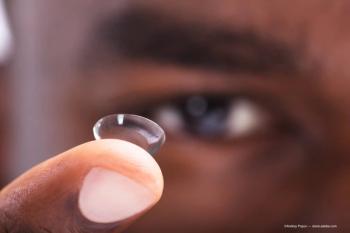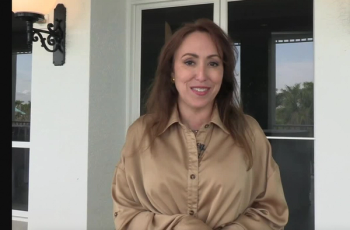
Interventional Glaucoma
Latest News
Latest Videos

CME Content
More News

Steven R. Sarkisian, MD, sat down with David Hutton of Ophthalmology Times to discuss his poster about the Travoprost intraocular implant in phakic eyes from the American Glaucoma Society meeting held in Huntington Beach

I. Paul Singh, MD, sat down with David Hutton of Ophthalmology Times to discuss his poster "Travoprost Intraocular Implant Demonstrates Efficacy in Diverse Subpopulations of OAG and OHT Subjects," from the American Glaucoma Society meeting held in Huntington Beach

The supplement is specifically crafted to promote healthy intraocular pressure (IOP), nurturing the well-being of retinal ganglion cells, and sustain the health of the retinal nerve fiber layer while boosting memory and concentration.

Leon Herndon, MD, President of the American Glaucoma Society, sat down with David Hutton of Ophthalmology Times to discuss the AGS meeting held in Huntington Beach and what attendees can expect as well as new and exciting information to come from the meeting.

ECP105 has been developed for the recovery of post-surgical treatment of glaucoma.

AI matched and outshone human specialists.

Teaching fellows can prove to be a rewarding experience for instructors.


Steps to take when a patient does not have a cataract.

Robert L Stamper, MD, raises the question of physician liability for allowing the patient to drive.

Shan C. Lin, MD, discusses combined minimally invasive glaucoma surgery and its impact on achieving improved intraocular pressure efficacy.

Adrienne Graves, PhD, and Andrew Iwach, MD, co-founders of Glaucoma 360, highlight the 13th annual Glaucoma 360 New Horizons Forum, held this year at the Westin St. Francis San Francisco on Union Square.

According to the company, the research is being conducted in collaboration with London-based Imperial College Healthcare NHS Trust.

The new contact lenses contain micro-sensors which monitor changes in IOP over a period of several hours, sending the data collected wirelessly so it can be analyzed by an ophthalmologist and a diagnosis given.

Researchers are unveiling results show previously unknown inherited genetic variants that contribute to primary open-angle glaucoma, the most common form of the disease.

Tarsier Pharma receives FDA agreement under Special Protocol Assessment for Tarsier-04 Phase 3 Trial
TRS01 ophthalmic solution is targeted for the treatment of non-infectious uveitis, including uveitic glaucoma.

Researchers at Indiana University School of Medicine will focus on providing a foundation for developing a new glaucoma therapeutic by testing human neurons and a regenerative therapy to rescue visual neurons from dying preclinically in human eyes under glaucoma conditions.

All five MACs have now issued statements that the final LCDs will not go into effect on January 29, 2024. The MACs had identified certain procedures as investigational for glaucoma management in patients over the age of 18.

Glaukos Corp's iDose TR has received FDA approval for the reduction of IOP in patients with ocular hypertension (OHT) or open-angle glaucoma (OAG) following a new drug application (NDA) submission.

A Q-switched, 532 nm-wavelength, frequency-doubled Nd:YAG laser, the Eagle is intended for use in performing selective laser trabeculoplasty.

The system hopes to use optical coherence tomography (OCT), while at the same time, leverage air and ultrasonic pulses to excite the mechanical waves in the cornea, enabling the detection of normotensive glaucoma.

MACs categorize goniotomy, canaloplasty, cyclophotocoagulation as experimental; glaucoma specialists speak out.

Analisa Arosemena, MD, underscores the importance of year-round glaucoma control through extended-release medications and laser treatments at EyeCon 2023.

Oluwatosin U. Smith, MD, and Peter J. McDonnell, MD, discuss their experience at EyeCon 2023, highlighting the latest updates in retina, cataract and refractive surgery, and the growing epidemic of myopia worldwide.

The Phase 2 study is evaluating the efficacy and safety using 2 concentrations of SBI-100 OE vs. placebo, dosing twice a day for 14 days.




























































.png)


